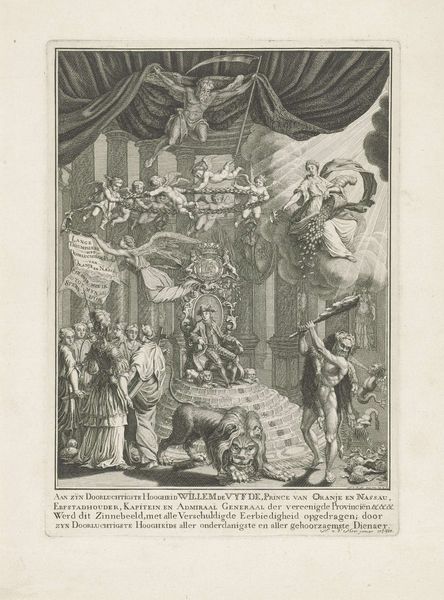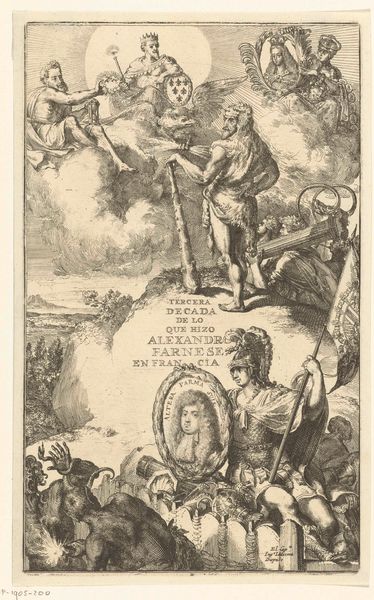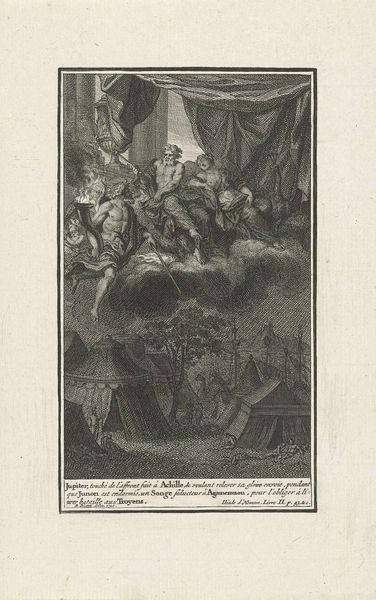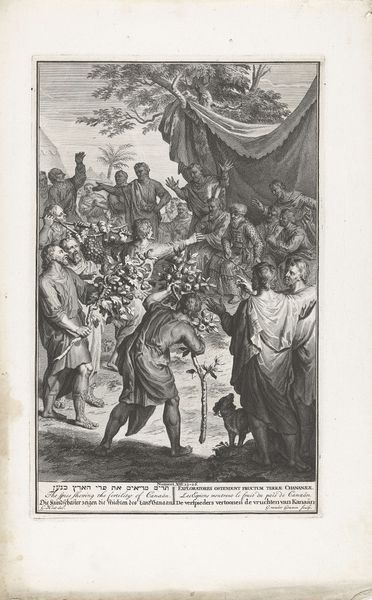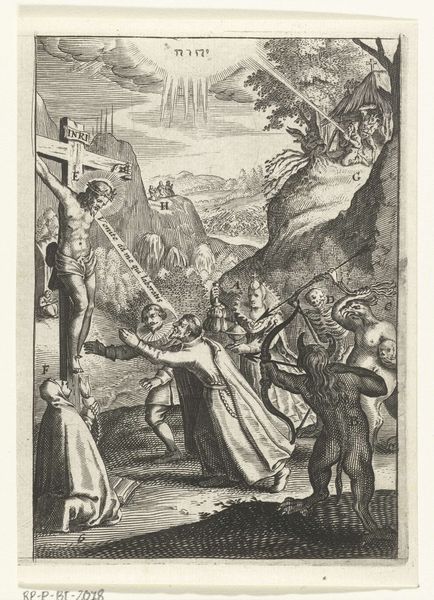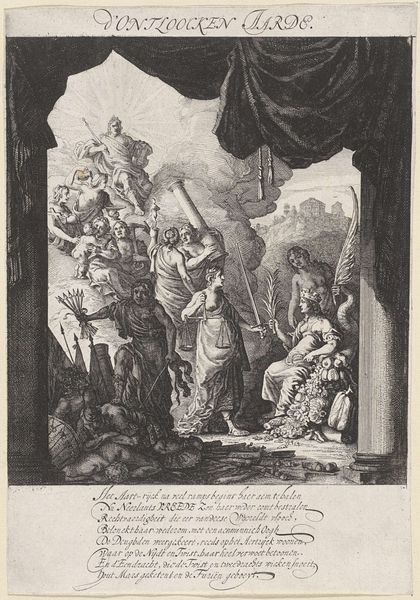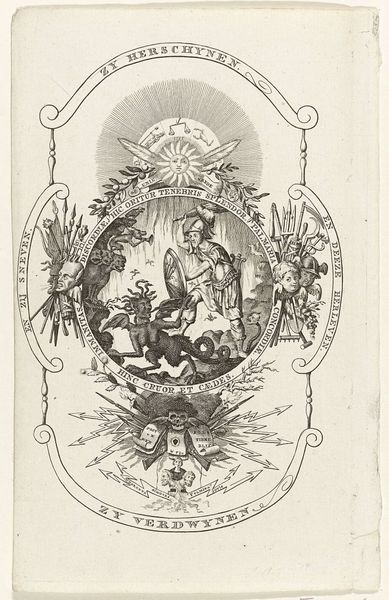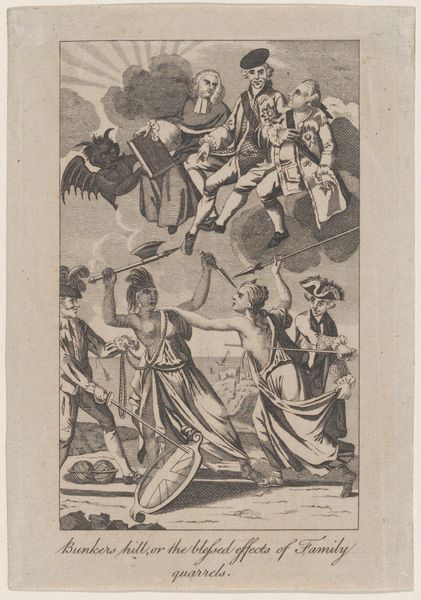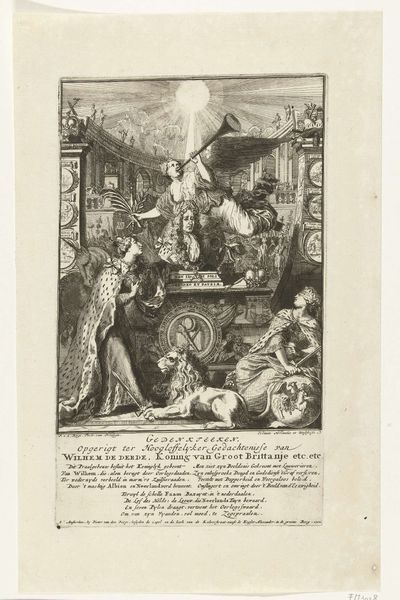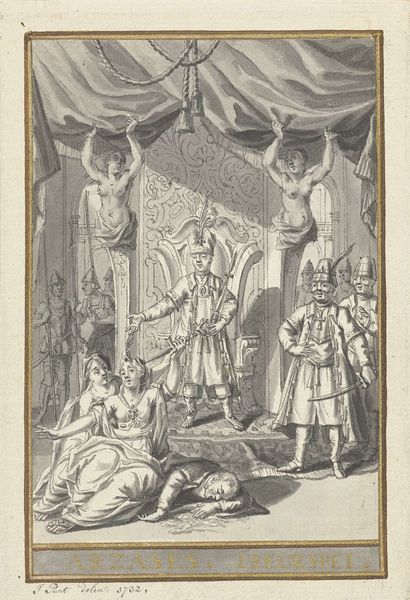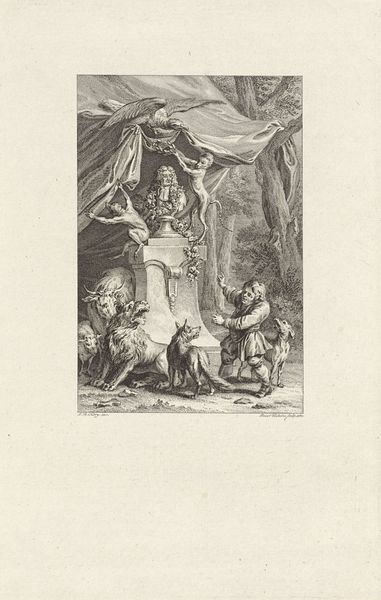
Dimensions: height mm, width mm
Copyright: Rijks Museum: Open Domain
Curator: Immediately, I notice this print's incredible detail. The cross-hatching is exquisite. There's a tension between the pastoral scene on the left, complete with animals, and the militaristic figures on the right. Editor: This etching, crafted in 1786 by Carel Jacob de Huyser, bears the title *Allegorie op Noord-Afrika en Malta*, or *Allegory of North Africa and Malta.* As such, the tension you are sensing might point towards broader intersectional conflicts or allegorical ideas. Curator: An allegory indeed! Look at the symbolic weight carried by the putto, seemingly delivering a message related to “Hedendaagsche Historie,” or contemporary history. The drapery frames the historical narrative much like the baroque style dictates. The image on the pedestal above is also quite fascinating. Editor: It’s vital to examine the historical moment carefully, which is embedded and contextualized by these allegorical elements. The title banner specifically lists Algiers, Tunis, Tripoli, and Malta. It almost reads as a geographic roll call relevant to Dutch power at the time. It raises important questions of Dutch involvement in the Mediterranean and in North Africa. How were these relationships visualized and justified back home? Curator: Absolutely. Notice the contrast in attire; one figure wears heavily decorated armor and another seems to carry a cross. De Huyser could be hinting at crusades and cultural confrontations. I see that even the vegetation transitions from full bloom to sharper thorns. The etching’s cultural memory certainly preserves continuity through the visual symbols present. Editor: Moreover, observe the gaze of the standing figure on the pedestal as they fix their sight to the ship sailing away. I would assume there's also a reflection on trade routes or maritime presence and their consequences in our current social fabric, be it gendered, racial or financial. Curator: I appreciate how your historical lens prompts critical thought about empire. For me, exploring de Huyser's visual vocabulary is key to unlocking the sentiments held at the time, offering us another level of interpretation. Editor: Well said, for both of us, this single print reveals a complex weave of symbols, history, and the lingering echoes of cultural power.
Comments
No comments
Be the first to comment and join the conversation on the ultimate creative platform.


